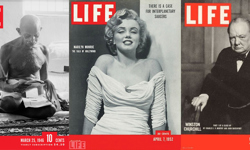At the recent Media Futures Conference, these ideas were debated by a wide range of media gurus from BBC, LBS, C4, ITV, Press Association, Techcrunch, Enders, Bloomberg and more… The discussions covered consumer behaviour, developments in device and broadcast technology and potential funding models. Many participants came from a broadcast perspective, yet their insights are equally relevant to print-based publishers. Here’s my take on the key themes, plus a view on the practical implications for publishers.
1. Media content starts the conversation
We have all heard about shorter attention spans, and the rise of media multi-tasking, among the middle-aged as well as teenagers. However, despite spending more time in front of screens, humans still want to share and chat and play and interact with other humans. This could be seen as spelling the end of traditional media brands, as user content takes precedence over editorially created material. However, good quality, compelling media content is frequently both the launch pad and the raw material for the subsequent user discussion. Consider the “comment is free” postings prompted by the Guardian’s articles, or the chat around popular programmes on itv.com.
2. Consumers use each media space for a different purpose
Old media was heavily siloed for different purposes - the TV in the living room (or the cinema) for passive entertainment, the radio to distract from tedious tasks like driving or ironing or pretending to revise, print media for escape, relaxation and personal exploration of an interest. The media industry structure followed these divisions, with very little cross-over between TV, radio, magazines, books, newspapers and film.
With the growth of broadband, wireless and mobile internet access in the last two years, how has this evolved? The laptop is considered a device for research, buying and public communications, and the mobile a portable, personal store for contacts, pictures, games and chat, plus the useful tools offered by iPhone apps. Whilst technology advances mean devices are starting to merge (see below), there is still a distinction between different media spaces, based more on the state of mind of the consumer, and whether they want to be entertained, informed, share and communicate, or complete a task:
* passive entertainment spaces where consumers want to sit back and soak it all up (TV derived);
* interactive spaces where consumers can search, learn, complete tasks, create, share, connect, play and chat publicly (laptop-derived);
* personal, portable spaces, where consumers can communicate privately with their own network, and access useful and relevant information and tools whatever their location (mobile and PDA);
* personal readers for learning, reflection, relaxation and retreat (print and portable eReaders).
Media brands and content producers will need to be mindful of the spaces they are likely to be inhabiting, and the circumstances in which their consumers may want to swap from one to another. Luckily, technology is making it easier for previously separate devices to communicate so content can be moved from one space to another, as a consumer moves from one mode to another, and wants to follow up on an idea from a TV programme, comment on a piece of content, or share it with friends.
3. Converging devices mean content can migrate easily
Technology is rapidly enabling the convergence of TV, radio, laptop, mobile and eReaders. Many businesses are enabling greater interaction between TV and web, either by adding a web-style interface to the TV screen, often with touch or gesture control (eg Boxee which allows users to navigate web sources of films, music, videos, pictures on their TV with an easy interface), or by synching TV content with live web interaction and gaming (eg Mint Digital, who allow audiences to play fantasy football online based on the results in a live TV game). It is also possible to browse the web on your TV screen from the sofa using a Wii remote. Portable eReaders and mobiles can now synch automatically to web and TV, making it easy for consumers to chat about a TV storyline on laptop or phone, or access their eReader library – and their own comments - online.
All this is helping consumers to use “broadcast” or “editorial” content from any platform to spark off further investigation, a public debate or private conversation, or even provide the opportunity to create and share their own content in response. They can switch effortlessly from one type of media space to another, and export content they like from one device to another for a new purpose.
4. New media business models are required
Scale used to be an advantage in media production, and media businesses were mini-monopolies, controlling consumers’ access to information and advertisers’ access to audiences. Media was funded largely by advertising, with special cases such as the licence fee for the BBC, plus subscription revenue from consumers. Large media groups were able to use their established business to subsidise start-ups, most notably Murdoch’s launch of Sky. Now advertisers have many more routes to reach audiences, thanks to search, and the explosion in online inventory, plus the ability to create their own content and communicate directly with consumers. The dip in ad revenues will not be restored when the economy recovers, so media owners will have to find new sources of revenue.
Consumers have more sources of free content via search and are more choosy about what they will pay for. Newspapers are publicly wrestling with a dilemma over charging for online news to recover the high costs of news journalism, but we forget that news has always been a loss leader, used to drive circulation or build credibility, and cross-subsidised by entertainment programming or sports in commercial broadcasters, or by advertising in newspapers. Soon large media groups will have to dramatically downscale their cost base, and cannot continue to compete with free news available from Google and the BBC. Scale will be a handicap rather than an advantage.
I believe that power will slowly shift to independent niche information businesses who can identify groups prepared to pay subscriptions or memberships in return for both targeted content and, more importantly, opportunities to connect with their like-minded peers to debate that content and add their own. The media organisations that survive will be those who are driven by curiosity and prepared to experiment rather than paralysed by fear, or harking back to the old days.
5. Media brands must engage the audience and host the debate
In future, media brands will not just be about content. Their expert, editorial content will be just the start of a conversation, and their brand and authority will cause like-minded people to gather to debate and share. Media brands will need to add emotional depth to engage their audience by incorporating narrative, games and play that help consumers engage with their content. They will have to offer opportunities for chat, creation and sharing, recognising that they are hosting the debate rather than preaching their message. They must be more relevant, targeted, even personalised, and even move into the realms of real-life interaction. Media brands will be more about creating a meeting place for conversations to take place than simply providing a vault of content.
Practical tips for publishers – how to evolve your media brand
* Experiment with new forms of content and media platforms. Don’t think of yourself as a publisher, tied to one format (print) and text and pictures. Develop your skills in video, and use it online to engage your customers. Test out digital editions and eReader technology (see Dominic Jacquesson’s article in the July/August issue of InPublishing).
* Make your content easy to export. Consider which media spaces you are currently occupying, and how your consumers might want to transfer your content from one to another in order to share, comment or access it remotely. Ensure it is easy for them to do this.
* Turn your brand into a meeting place. Aim to host the debate rather than hog all the airtime. Consider how you can facilitate either face to face or online connections between people in your audience.
* Add narrative, games and opportunities to play and interact to your content. Use the techniques of TV, cinema and games developers in building narrative, establishing characters, creating competitions and games, to build engagement with your audience.
* Nurture a core membership group. Understand your most loyal consumers / readers, and work out how you can develop a package of services that they are prepared to pay for as subscribers or members. These are likely to go beyond pure content, and could include virtual or real-life events and networking.
Summary
Media businesses have seen dramatic change in the last few years, and the pace of technology innovation and consumer behaviour means this isn’t over yet. However, with change comes opportunity, and I believe that strong media brands with authority, deep reader and advertiser relationships, and an attitude of experimentation, will continue to thrive.
About Media Futures
The Media Futures Conference is organised annually by Nico Macdonald of Innovation Agenda, supported by Bloomberg and the Press Association, and brings together thinkers and practitioners in media to share their work and debate future trends in media technology innovation, consumer behaviour and media business models. Nico plans to publish some of the ideas coming out of the conference; see the website www.mediafuturesconference.org/2009/ for more details.










